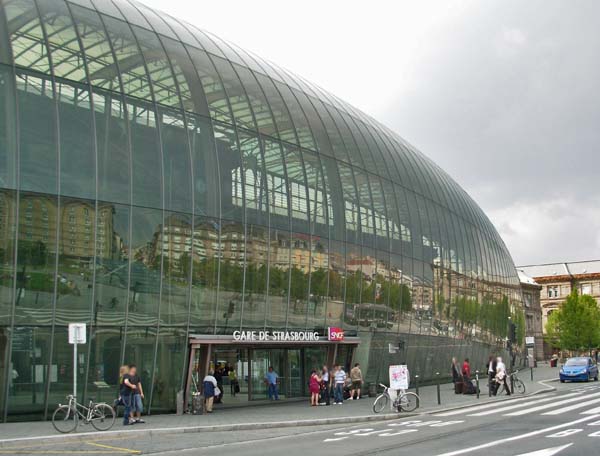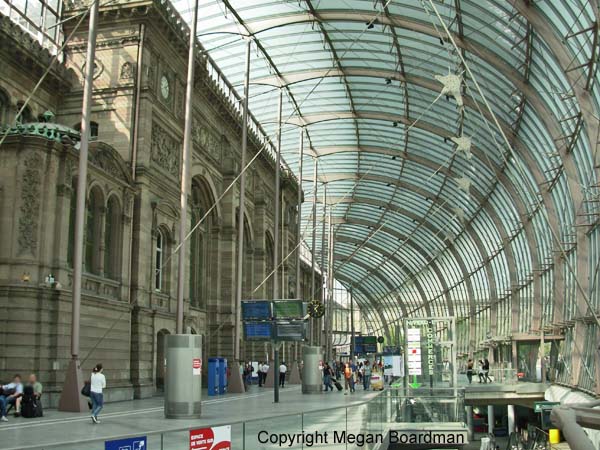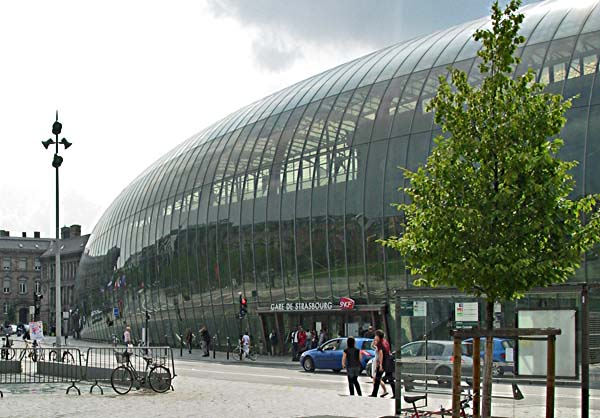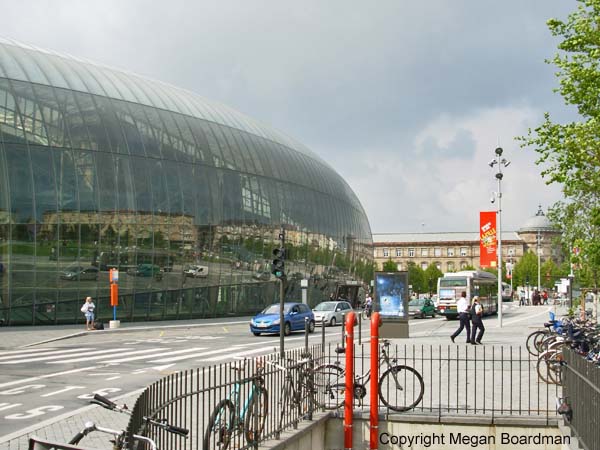| Architect |
Jean-Marie Duthilleul |
| Date Built |
2008 |
| Location |
Strasbourg |
| Description |
|
|
Hidden behind this cucoon of glass stands
the original Strasbourg Railway Station
designed in 1883 by the architect Johann
Jacobsthal. In 2007 Jean-Marie
Duthilleul, the architect for the French
railway, designed this 120 metre long
glass shell creating a 25 metre internal
space which acts as public transition area
between the station and the road outside. This winter garden like structure involves 16 main steel arches spaced at nine metre intervals with horizontal secondary supports. The glazing is made up of 6,000 m2 of cold-formed LSG panes. The company involved in the construction says of the glass that it, "was created from various components: six-millimetre thermally pre-stressed white glass with a double silkscreen printing in white/black similar to that on the roof, plastic composite foil with integrated sun protection film and six-millimetre thermally pre-stressed glass with low coating." When asked about the interaction between the old building and the new, the architect Jean-Marie Duthilleul said, "If the canopy is a transition area between the city and trains, it should in no way be seen as an "expansion" of the stone building. The canopy is the city that comes to meet the train station.." ..... "Designing this addition to the historic building, it was obviously exposed to this type of debate that has already started the first public meeting. I was then able to explain a glass wall has a materiality that by hours of day or season, according to the angles, or by distance, would mix in different ways the vision of the Interior and the reflection from the outside, the street and the garden. The question is not whether this work glass seems not to exist before the historic building, but it seems to continue to appreciate the history of the site appropriately, it is adjusted to the new meaning Strasbourg's station in the new century, as relates to the high-speed network and daily passage of tens of thousands of people between TER and modern transportation of the contemporary city, and finally it gives the city, this place, an expression of its dynamism." |
|
|
Strasbourg
Railway Station - Strasbourg, France
    Close Window  |